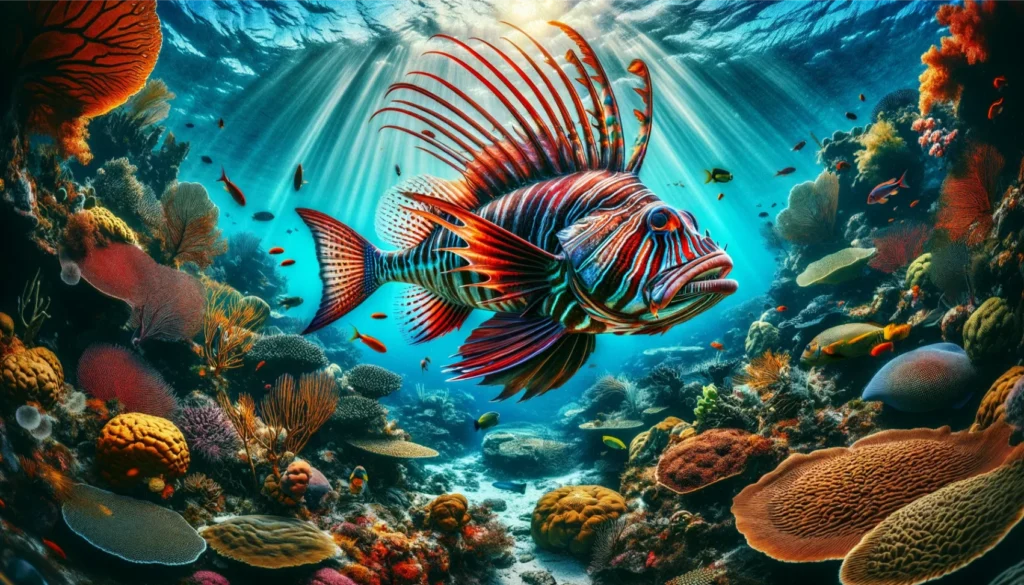12 Fascinating Facts About Roosterfish
What is Roosterfish?
The Roosterfish (Nematistius pectoralis) is a popular game fish found in the warm coastal waters of the Eastern Pacific Ocean. It gets its name from its distinctive dorsal fin which has long trailing spines resembling a rooster’s comb. Roosterfish are large predatory fish, growing up to 5 feet long and weighing over 100 pounds. They feed on small bait fish like sardines and anchovies which they hunt in shallow inshore waters.
Roosterfish put up an exciting fight when caught on rod and reel, making them a favorite target for sport fishermen. Areas like Baja California, Costa Rica, and Panama have productive Roosterfish fisheries. The world record for Roosterfish stands at 114 pounds. While some anglers keep and eat Roosterfish, they are not considered great table fare. Because of their beauty and fighting spirit, catch-and-release fishing for Roosterfish has become more popular.
Fishermen use a variety of techniques to pursue Roosterfish, from trolling offshore to sight casting from the beach. Their speed and wariness make Roosterfish a challenging species to catch. Videos posted online have spread awareness of Roosterfish as a spectacular sportfish.
To learn more about these amazing game fish, here are 12 fascinating facts about roosterfish:

Facts About Roosterfish
1. Roosterfish get their name from the shape of their dorsal fin
The most striking feature of the roosterfish is the long, pointed dorsal fin on its back that resembles a rooster’s comb. This is how they got their name, as “gallo” means rooster in Spanish. When excited or attacking prey, they can fully erect this fin.
2. They are powerful swimmers and acrobatic hunters
Roosterfish are very strong swimmers built for speed and endurance. They aggressively hunt smaller fish like sardines, anchovies, and mullets by herding them into bait balls and attacking from below.
Roosterfish will often leap completely out of the water and do aerial flips while hunting, making for an exciting sight for observers.
3. Roosterfish can reach over 5 feet long
The largest roosterfish can measure over 5 feet (1.5 m) long and weigh over 100 pounds (45 kg). However, most adults are around 3 feet (0.9 m) long and 30 pounds (13.6 kg).
4. They inhabit tropical and subtropical waters
Roosterfish live in the warm coastal waters of the eastern Pacific Ocean. Their range stretches from Baja California down to Peru, frequenting bays, estuaries, and beaches.
5. Males and females look different
There are distinct physical differences between male and female roosterfish. Males have a much longer dorsal fin and are overall more colorful with shades of blue, green, silver, and orange. Females have a shorter dorsal fin and muted gray coloration.
6. Roosterfish season is in the summer and fall
The peak roosterfish season is during the warmer summer and fall months. This coincides with their spawning period when they are most active near the surface. The best times to catch roosterfish are between July and October.
7. They spawn nearshore and the eggs are pelagic
Roosterfish spawn in shallow, nearshore waters less than 30 feet deep. The small buoyant eggs then float freely out to sea, carried by ocean currents. When they hatch, the larvae continue drifting in the plankton-rich waters.
8. Roosterfish are ambush predators
They primarily hunt by waiting motionless near structure or bait schools and then ambushing their prey with sudden speed bursts up to 60 mph. Their diet consists mainly of smaller fish like sardines, anchovies, mullet, and more.
9. Large roosterfish are considered outstanding game fish
The roosterfish’s large size, blistering runs, and aerial displays when hooked make them a highly prized sport fish for anglers. They put up a tough fight on light saltwater tackle. Roosterfish are strictly caught and released.
10. They are not commercially fished
Despite their large size, roosterfish have little commercial value compared to other sport fish like tuna or billfish. As a result, they are almost exclusively caught by recreational anglers and not targeted by commercial fishing vessels.
11. Roosterfish populations are vulnerable
Because they tend to inhabit shallow nearshore waters, roosterfish are vulnerable to pollution, habitat loss from coastal development, and climate change. Their numbers have declined in areas, making conservation efforts for the species a priority.
12. Roosterfish can live for over 15 years
Studies show roosterfish have a lifespan of at least 15 years. Their growth slows considerably after they reach about 3 feet long. The older fish in the population play an important role in the species’ ability to reproduce and thrive.
Conclusion
With their signature dorsal fins, hard-charging hunts, and formidable strength, roosterfish are one of the ocean’s most marvelous game fish. As vulnerable nearshore predators, ongoing conservation efforts to protect roosterfish populations and habitat are crucial so anglers can enjoy sustainably catching these incredible sport fish for years to come.







